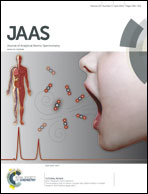Relative spectral response calibration of a spectrometer system for laser induced breakdown spectroscopy using the argon branching ratio method
Abstract
This paper reports the use of the Ar branching ratio as an alternative means of calibrating the relative spectral response of a spectrometer/detector apparatus, with emphasis on its use in Laser Induced Breakdown Spectroscopy (LIBS) diagnostic experiments. The method is compared to the more conventional calibration routine using standard lamps. The argon method was implemented with an Ar-filled hollow cathode lamp and with a LIBS plasma in argon at different pressures. For the conventional calibration, a quartz tungsten halogen (QTH) lamp available in our laboratory has been used as a standard of spectral irradiance. The results obtained with the three methods are compared and discussed. It is shown that the spectral response data agree well with each other above 350 nm. At lower wavelengths, the data differ significantly. It is believed that this is due to the degradation of the calibration values of the lamp, which was not re-calibrated in a long time. It is concluded that the Ar-branching ratio method is a useful calibration technique for use with LIBS plasma diagnostic experiments.


 Please wait while we load your content...
Please wait while we load your content...